6. Computational Couture#
First Round!#
For this week’s assignment, I planned to create a pattern using both the 3D printer and the laser cut or engraving. My goal is to create a “digital” lace starting from a model of a circle skirt
Research#
I focused my research on interesting radial or circular patterns, mostly geometric, that would allow me to create a pattern that could be repeated on the various panels of the skirt
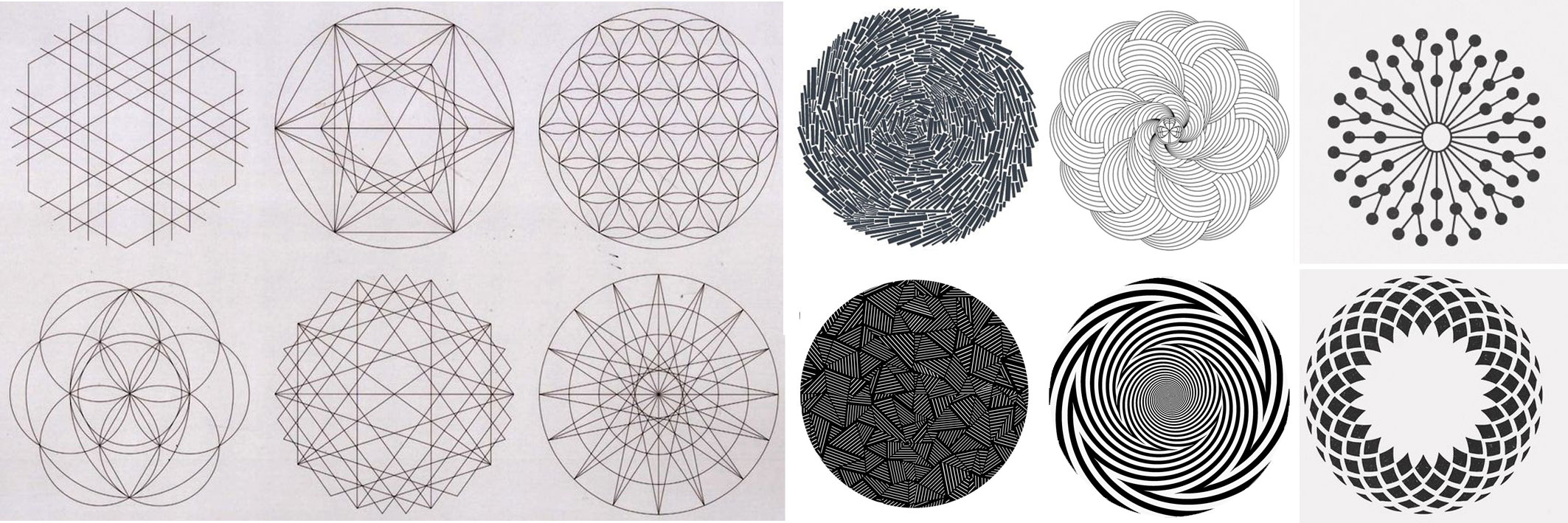
Wanting to get an average head length of 55 cm to be able to laserize the whole sheet I needed to divide the wheel into 8 panels to be lasered in pairs of two.
I have followed various online tutorials that work on radial patterns to understand how to manage and implement my idea. In the link below with Grasshopper for Rhino you create a pattern to make an Islamic star.
I built the basic pattern of the skirt marking the waist (80cm circumference) with a circle of 25cm in diameter and a height of 55 cm. By placing the guidelines on the Rhinoceros grid I could control the crossing of the lines generated instead by my playing with the slides on grasshopper. I wanted to have a full pattern that completely decorated the skirt ..
I set the file and the panels so I can sew them after lasering them in pairs.
.png)
But there is a problem, I’m not convinced by the result, I’m still working on the file and therefore it will take more than expected for the delivery but it seemed interesting to show this step that will become intermediate in the design of the skirt
Second Round!#
Grasshopper, my old friend#
After various tests and tutorials followed I kept the idea of making the circle skirt and not to divide it into four panels. I chose a pattern that created thicker holes towards the lower edge of the skirt and almost absent towards the waist.
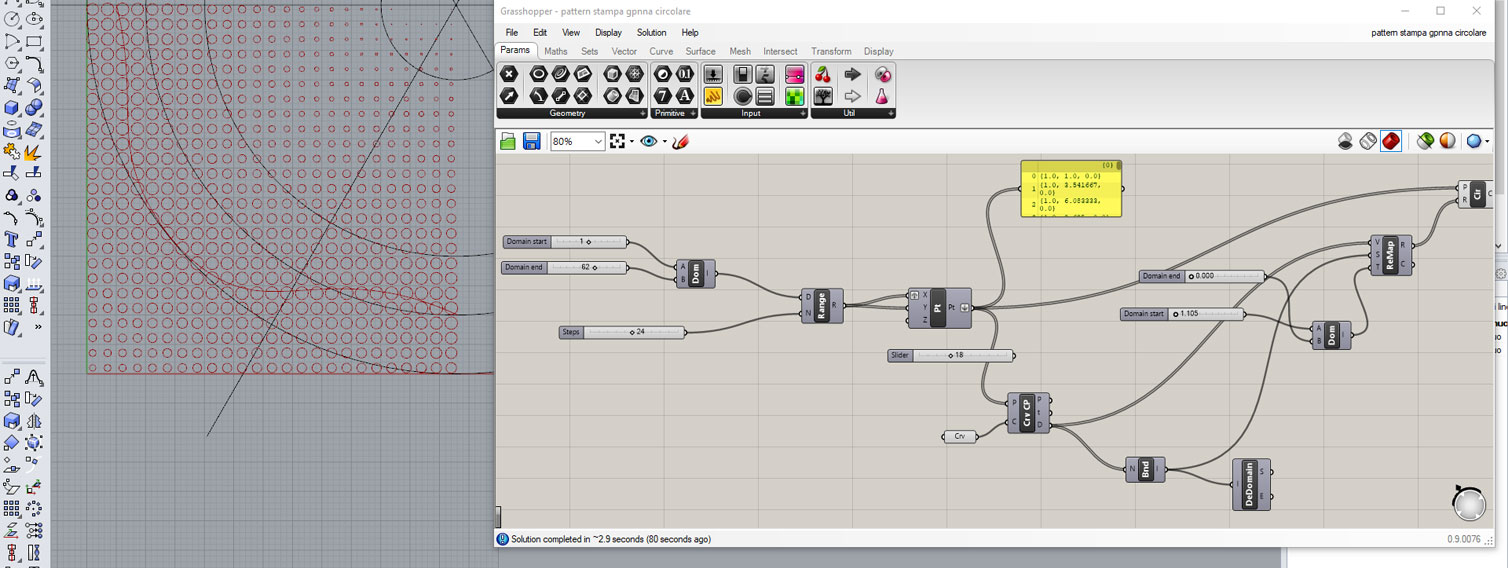
The pattern obtained with grasshopper was then modified on rhinocers in order to match it with the measurements of the skirt. I then made the circles coincide with the end of the fabric, extending the cuts so that the fabric is cut even if there are imperfections in positioning it in the laser cutting machine.
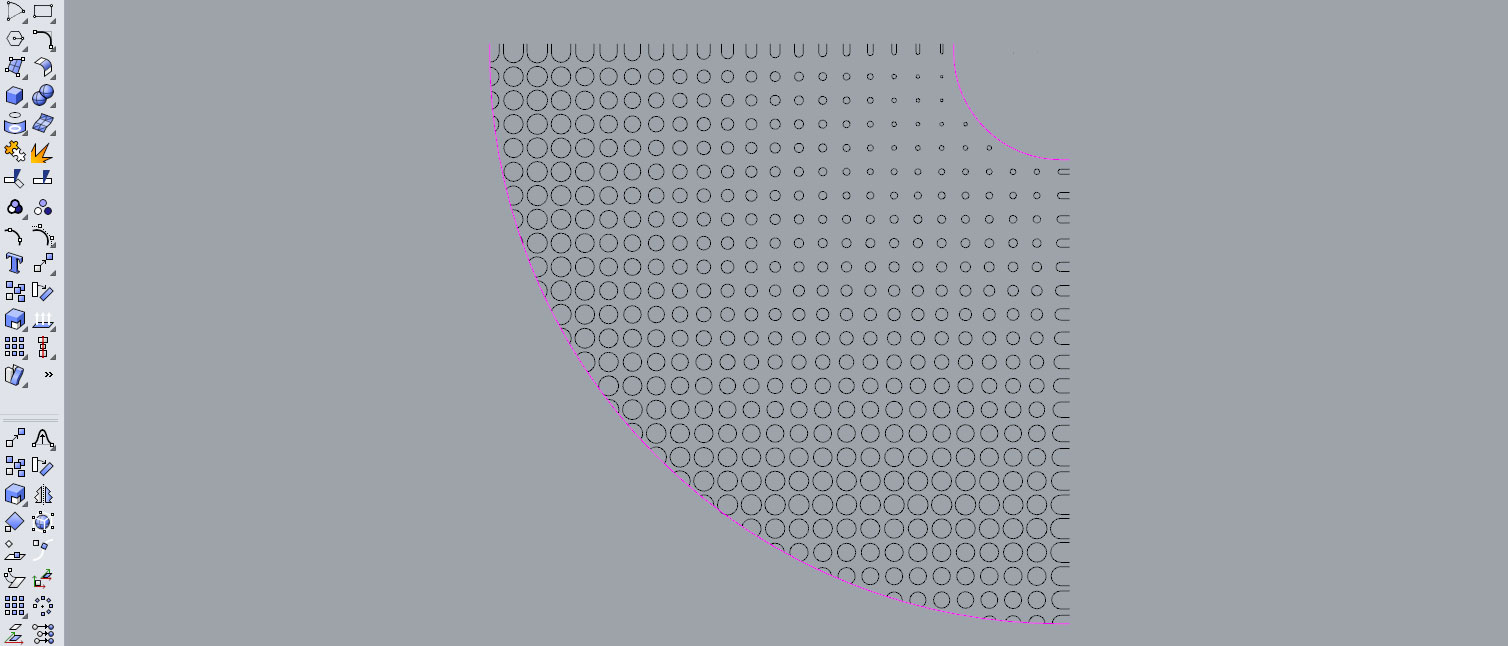
Cutting Step#
The movement of the arrangement of the cuts makes the fabric lighter and creates an interesting movement.
In order to obtain a result as precise as possible I crushed by basing the edges of the cloth circle. In this way the skirt could be cut in a single time and without cutting the fabric.

Dots, dots of any size. Maybe I will use them for applications. Nothing is thrown away!
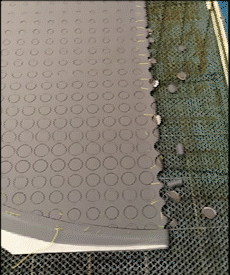
Results#
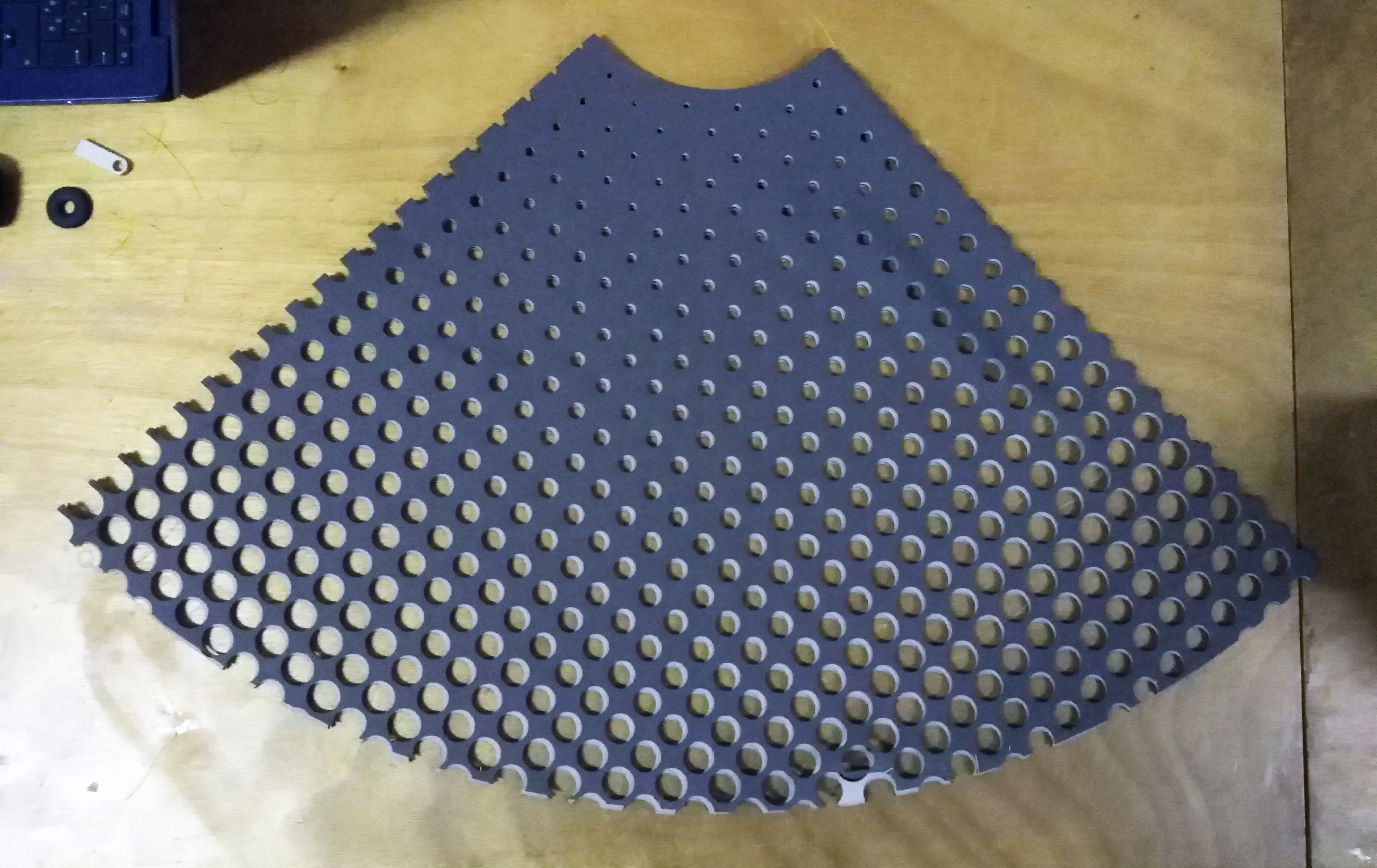

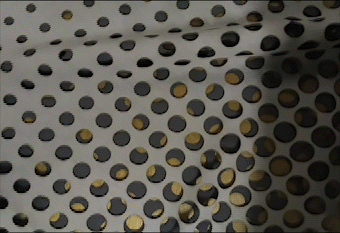
I used an elastic waistband to be able to use the skirt from both sides of the fabric (light gray jersey / gray textured neoprene on the other side). Perhaps it would be better to wear it with an underskirt or leggings. It’s a very airy garment ;)
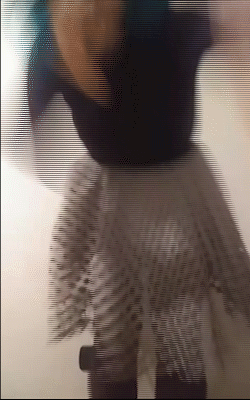
Print a 3d pattern#
Starting from the pattern made of polka dots for the skirt I tried to extrude the curves creating cones of different heights.
We then printed the file with a 3d printer on a piece of tulle with an elastic, rubbery black filament.
The result was not very precise, with many threads but adherence to the fabric is sufficient.
.jpg)
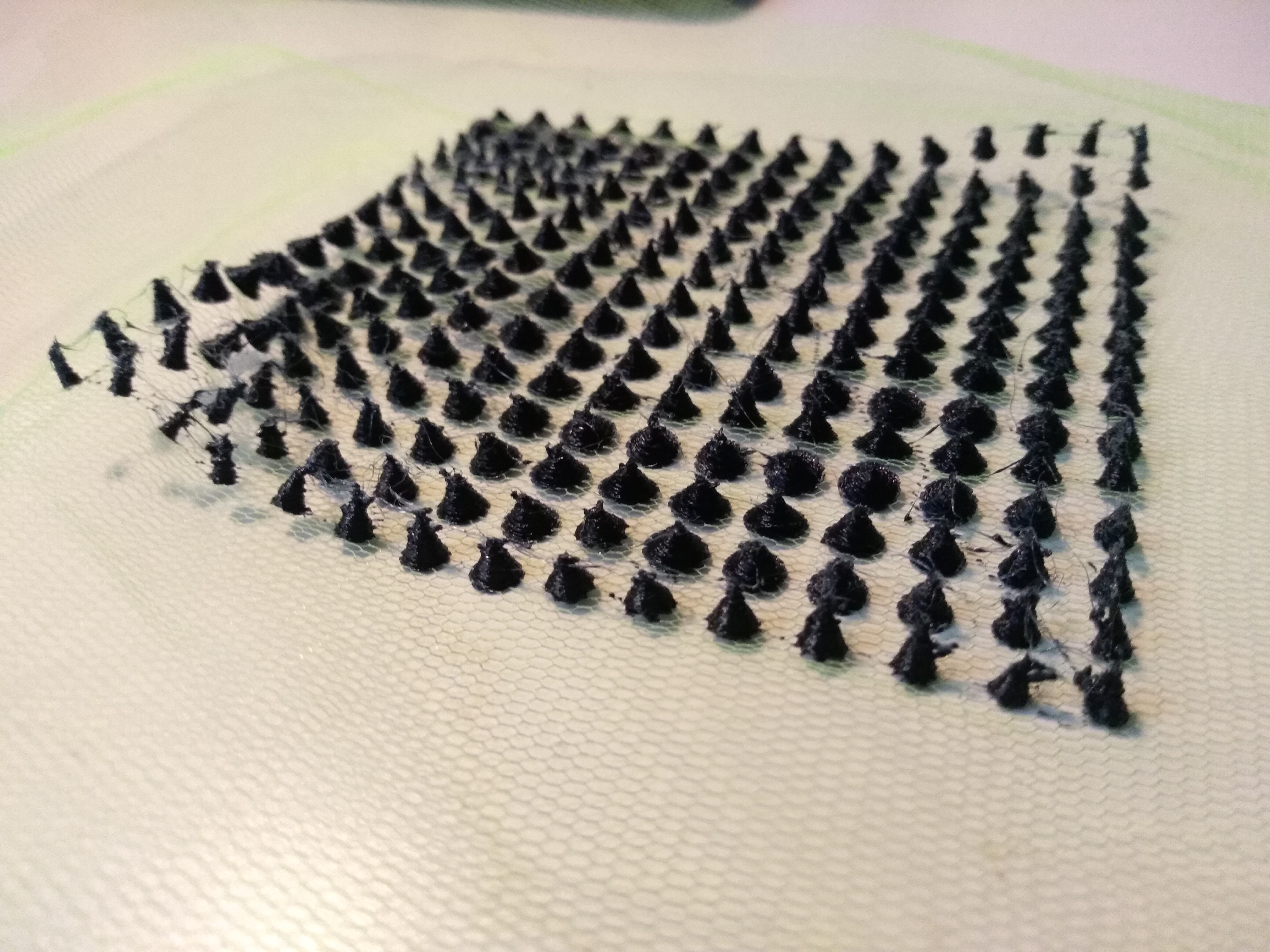

Files#
Here a folder on google drive with grasshopper and Rhino files